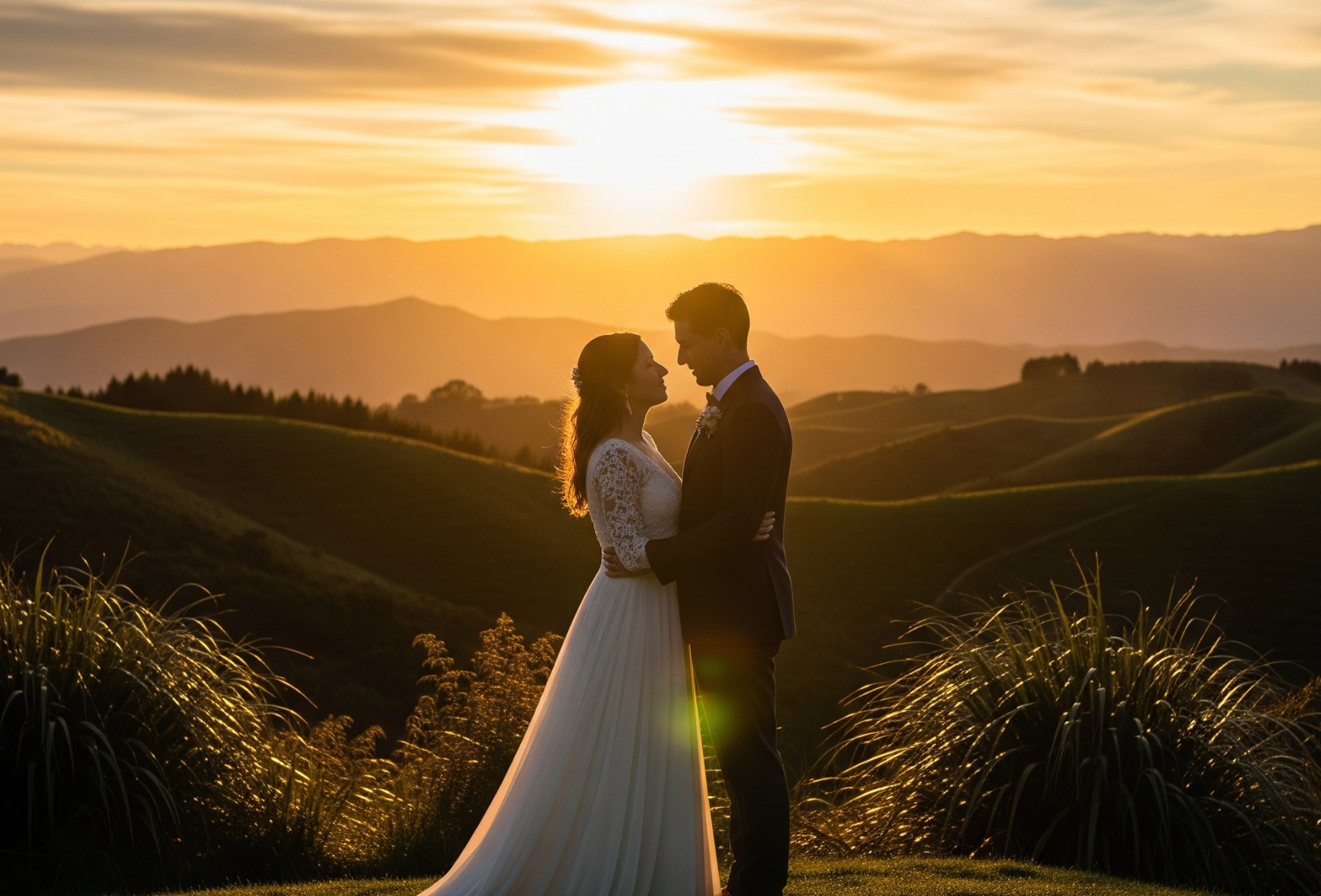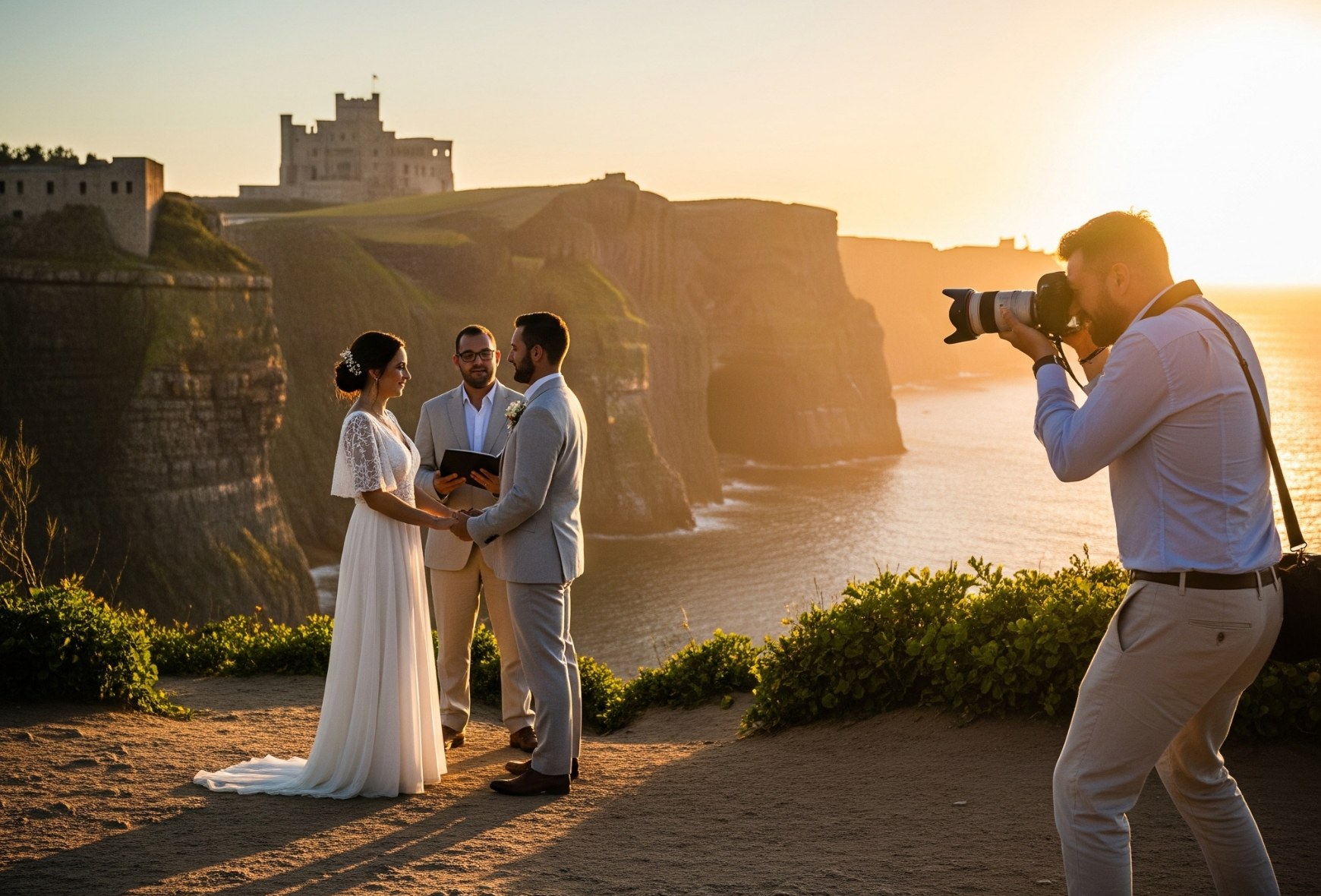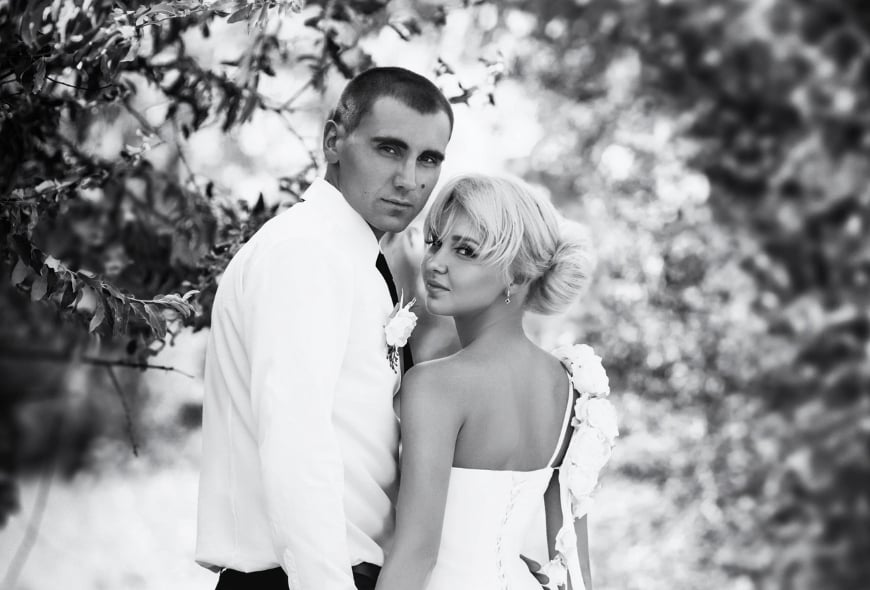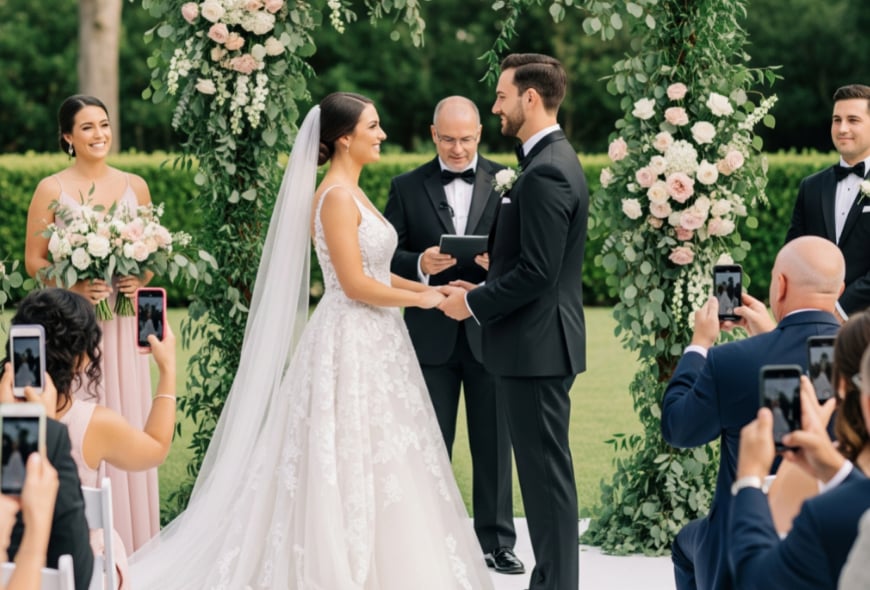
Your wedding day is one of the most important days of your life, and naturally, you want every moment captured beautifully. Whilst flowers, dress, and venue are crucial elements, there's one often-overlooked factor that can transform your wedding photography from lovely to absolutely magical: lighting. The golden hour, that enchanting period just after sunrise and before sunset, offers the most stunning natural light for your wedding photographs.
What Is Golden Hour?
Golden hour occurs twice daily—approximately one hour after sunrise and one hour before sunset. During these precious moments, the sun sits low on the horizon, casting a warm, soft, honeyed glow that photographers dream of. This natural phenomenon creates flattering light that minimises harsh shadows, reduces contrast, and bathes everything in a romantic, ethereal ambience.
Unlike the harsh midday sun that can create unflattering shadows under eyes and noses, golden hour light is directional yet gentle. It wraps around faces beautifully, creating a natural glow that makes everyone look radiant—perfect for those once-in-a-lifetime wedding portraits.
The Science Behind the Magic
The golden hour's enchanting quality stems from the sun's position relative to Earth's atmosphere. When the sun is low, its light travels through more atmospheric particles, scattering the cooler blue tones and allowing the warmer yellow, orange, and red wavelengths to dominate. This natural filtering creates that coveted warm, golden tone that makes skin look luminous and colours appear rich and saturated.
Professional photographers often plan entire shoots around these optimal lighting conditions because artificial lighting simply cannot replicate the natural beauty of golden hour illumination.
Planning Your Ceremony Around Golden Hour
Morning Golden Hour (6:00-8:00 AM)
Morning golden hour ceremonies offer several advantages for couples willing to embrace an earlier start. The light is crisp and clean, perfect for outdoor ceremonies in gardens or by the seaside. Morning ceremonies also mean you'll have the entire day for celebrations, and venues often offer reduced rates for earlier bookings.
Consider a sunrise ceremony if you're planning an intimate gathering. The symbolism of beginning your marriage as the day begins is beautifully poetic, and your guests will remember the unique experience for years to come.
Evening Golden Hour (6:00-8:00 PM depending on season)
Evening golden hour is more popular for weddings, particularly during summer months when the sun sets later. This timing allows for a traditional afternoon ceremony followed by cocktail hour during the magical light period. The warm, romantic glow creates the perfect backdrop for couple portraits and group photographs.
Evening golden hour also provides stunning opportunities for backlit photographs, where couples appear silhouetted against the glowing sky, creating dramatic and romantic imagery.
Seasonal Considerations for New Zealand Weddings
Spring Weddings (September-November)
New Zealand spring offers gradually lengthening days with golden hour occurring around 6:00-7:30 PM by November. The fresh green landscape and blooming flowers provide stunning backdrops, though spring weather can be changeable. Have indoor backup plans for both ceremony and photography, particularly in regions known for unpredictable weather patterns.
Summer Weddings (December-February)
Summer provides the longest golden hour opportunities, with sunset occurring as late as 8:30 PM in December and January. This gives couples maximum flexibility for scheduling outdoor ceremonies and receptions. However, summer is peak wedding season, so popular venues book well in advance and command premium pricing.
Autumn Weddings (March-May)
Autumn golden hour occurs earlier, typically between 6:00-7:00 PM in March, moving to 5:00-6:00 PM by May. The seasonal colours of deciduous trees, particularly in Central Otago and Canterbury, create spectacular backdrops. The rich golds, oranges, and reds of autumn foliage complement golden hour lighting beautifully.
Winter Weddings (June-August)
Winter golden hour is brief and occurs early, often around 4:30-5:30 PM. Whilst challenging, winter light can be incredibly dramatic, particularly in alpine regions with snow-capped mountains. Consider afternoon ceremonies to maximise natural light, and embrace the cosy, intimate atmosphere that winter weddings provide.
Working with Your Photographer
Pre-Wedding Consultation
Discuss golden hour photography during your initial consultation. Professional photographers understand how to maximise these lighting conditions and can help you plan your timeline accordingly. They may suggest specific locations or timing adjustments to capture the best light.
Location Scouting
Visit your venue during golden hour before your wedding day. This reconnaissance allows you to identify the best spots for photographs and understand how light moves across your chosen locations. Your photographer can use this information to plan the perfect shots.
Timeline Flexibility
Build flexibility into your wedding timeline. Golden hour waits for no one, so having buffer time ensures you can capture those magical moments without rushing. Consider scheduling your couple portraits during this optimal period, even if it means briefly stepping away from reception activities.
Venue Selection for Optimal Light
Outdoor Venues
New Zealand's diverse landscapes offer incredible opportunities for golden hour photography. Vineyards in Marlborough and Central Otago, beaches along the coastlines, alpine meadows, and native bush settings all provide stunning backdrops. Look for locations with open western exposure for evening ceremonies or eastern exposure for morning celebrations. Consider iconic New Zealand settings like lakeshores, rolling hills, or locations with mountain vistas.
Indoor Venues with Large Windows
If you prefer an indoor ceremony, choose venues that showcase New Zealand's natural beauty through large windows. Many modern venues feature floor-to-ceiling windows that frame spectacular views whilst allowing golden hour light to flood the space. Conservatories and glass pavilions offer weather protection whilst maintaining connection to the landscape.
Mixed Indoor/Outdoor Options
Many modern venues offer the best of both worlds with indoor ceremony spaces that open onto terraces or gardens. This flexibility allows you to move seamlessly between spaces to capture optimal lighting conditions.
Creating Your Golden Hour Timeline
Sample Evening Timeline
- 4:00 PM: Ceremony begins
- 5:00 PM: Cocktail hour commences
- 6:30 PM: Golden hour couple portraits
- 7:30 PM: Group family photographs
- 8:00 PM: Reception and dinner begin
Sample Morning Timeline
- 7:00 AM: Golden hour couple portraits
- 8:00 AM: Ceremony begins
- 9:00 AM: Group photographs and celebration
- 10:00 AM: Wedding breakfast
- 12:00 PM: Continue celebrations
Alternative Options When Golden Hour Isn't Possible
Overcast Days
Don't despair if your wedding day is cloudy. Overcast skies act as a giant softbox, creating even, flattering light throughout the day. Whilst different from golden hour magic, cloudy conditions can produce beautifully romantic photographs.
Indoor Lighting Solutions
Professional photographers carry equipment to create beautiful lighting indoors. Whilst artificial lighting requires skill to appear natural, experienced photographers can create stunning portraits regardless of weather conditions.
Blue Hour Photography
The period just after sunset, known as blue hour, offers another magical lighting opportunity. The sky takes on deep blue tones whilst artificial lights begin to twinkle, creating romantic and dramatic imagery.
Practical Tips for Couples
Communicate with Vendors
Ensure your entire vendor team understands your golden hour priorities. Hair and makeup artists, florists, and coordinators should all be aware of your timeline to ensure everything runs smoothly.
Prepare for New Zealand Weather
New Zealand weather can change rapidly, particularly in mountainous regions. Have backup plans and remain flexible—sometimes the most memorable photographs come from dramatic weather conditions. The country's diverse microclimates mean conditions can vary significantly even within the same region.
Consider Regional Differences
New Zealand's geography creates varied lighting conditions across different regions. Coastal areas may have different golden hour qualities compared to inland locations, and the South Island's dramatic landscapes offer different photographic opportunities than the North Island's rolling hills and volcanic features.
Trust Your Photographer
Professional wedding photographers are experts at working with natural light. Trust their guidance on timing and positioning—they understand how to make you look your absolute best in any lighting condition.
Consider Engagement Sessions
Schedule your engagement photographs during golden hour to experience this magical lighting first-hand. This preview helps you understand how the light works and builds confidence for your wedding day.
Making the Most of Your Investment
Professional wedding photography represents a significant investment, and golden hour planning ensures you receive maximum value. These photographs will grace your walls and family albums for generations, making the effort to optimise lighting conditions worthwhile.
Remember that golden hour magic extends beyond just the light itself - it's about the romantic atmosphere, the warm emotions, and the natural beauty that this special time of day brings to your celebration.
Your wedding day will be filled with countless magical moments, but planning around golden hour ensures that the visual memories of your special day capture New Zealand's natural beauty at its finest. With proper planning, communication, and a touch of flexibility, you can harness the country's spectacular light to create wedding photographs that truly showcase both your love story and the stunning landscape that surrounds it.
Check out our amazing Photographers HERE


